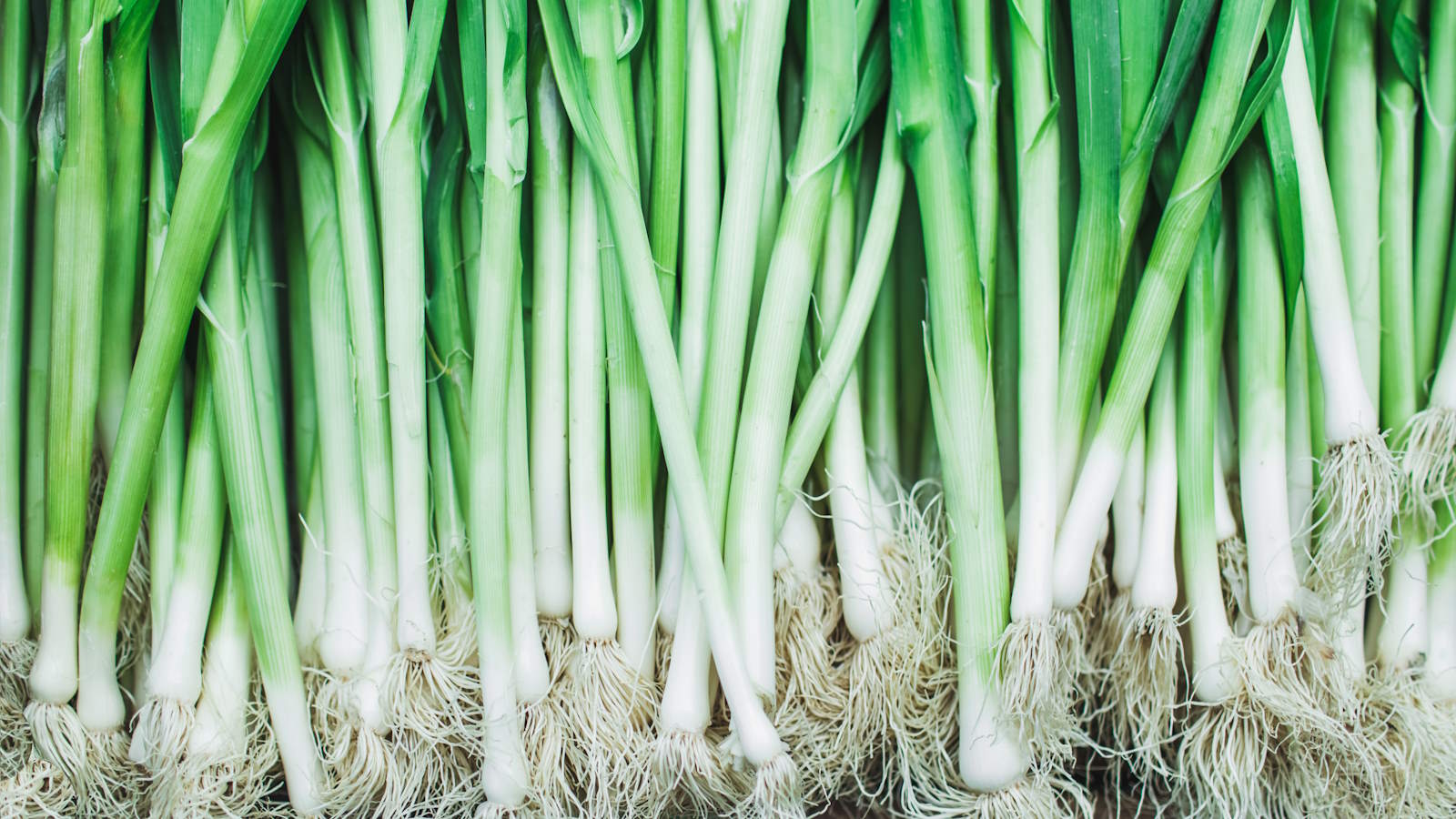
Green onions are a staple in most kitchens and highly versatile, being used in a plethora of dishes whether cooked or eaten raw. They are also one of the easiest vegetables to grow and can be a great way to start discovering the joys of homegrown crops.
Green onions are very fast-growing and you can get harvests of tender stalks with a mild onion flavor within months of sowing the crop. Unlike when growing onions to maturity for bulbs, green onions can be sown regularly to give you a long cropping season.
The easy-to-grow vegetables are also versatile in the garden, as they can be grown in the ground or in containers. You can even re-sprout green onions in water to give a second harvest, giving you an additional rewarding way to maximize the harvests from your garden.
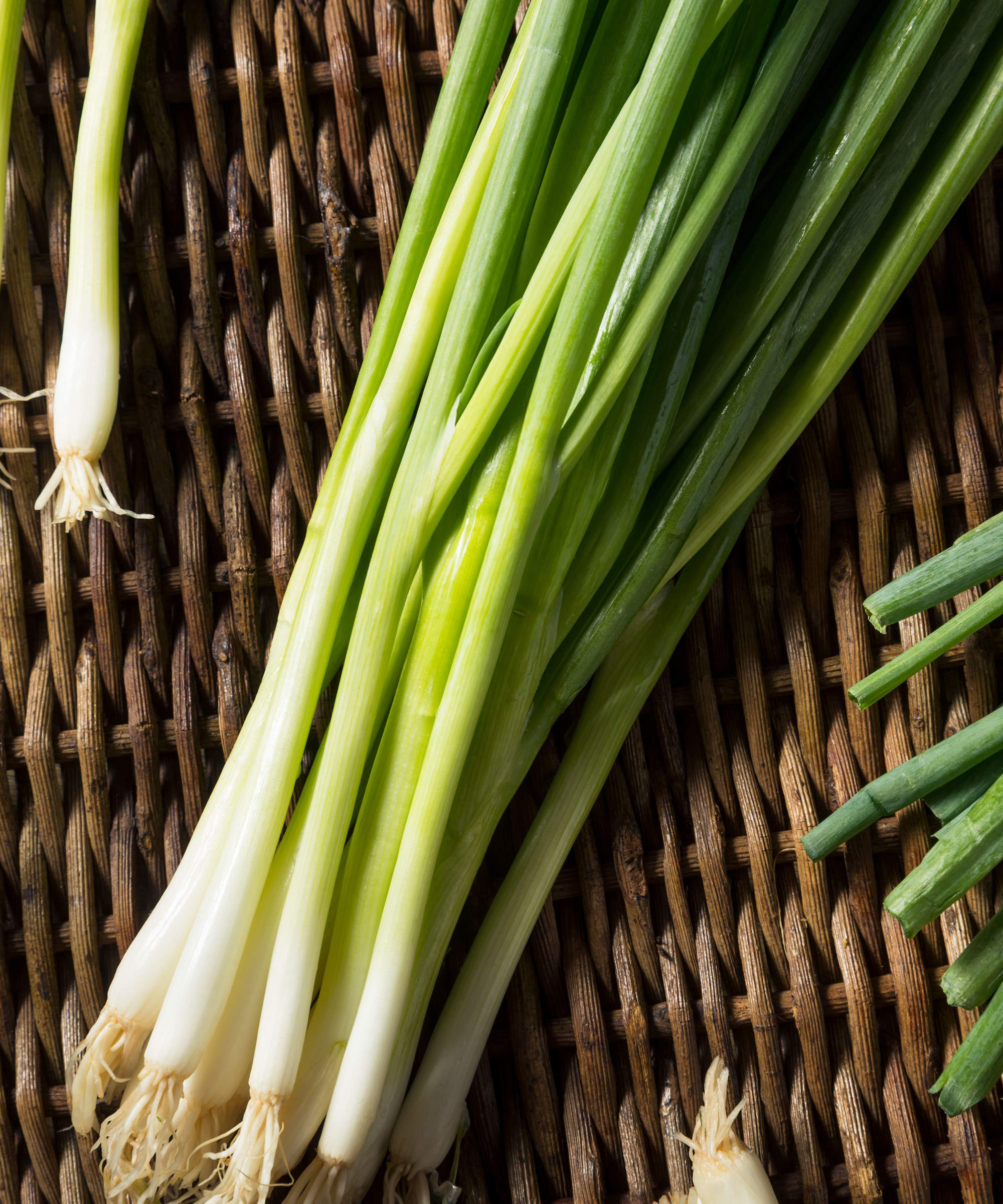
What are green onions?
There are many different types of onions to grow and most are grown to maturity to produce large bulbs. Others, such as green onions, are harvested before any bulb forms. Green onions are slightly different from spring onions.
They are harvested as a thin stem with green tops before any bulb starts to form, while spring onions are usually harvested once a small bulb has formed. It can be confusing - especially as the terms green onions, spring onions, and also scallions, are all-too-often used interchangeably.
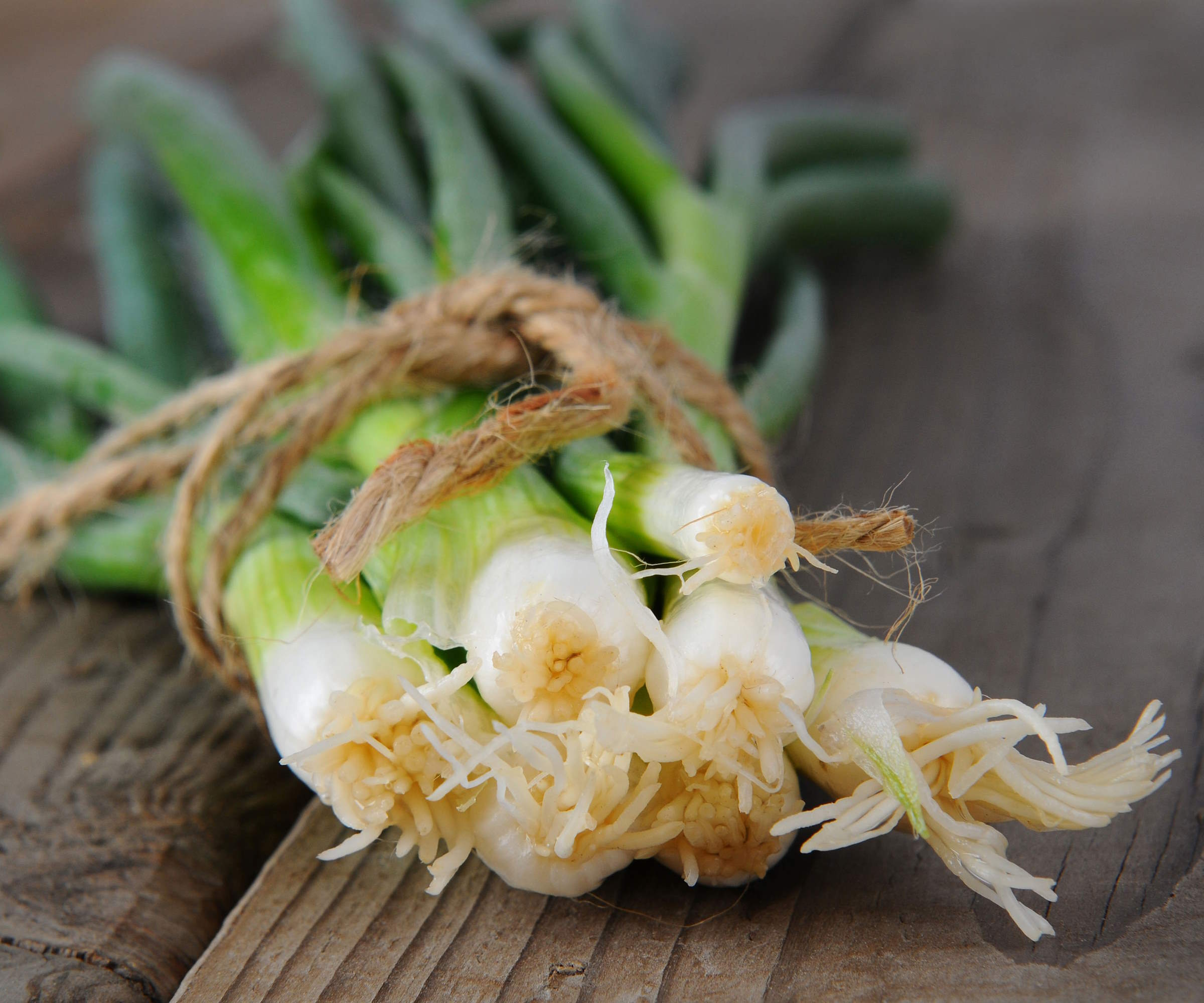
Where to plant green onions
Green onions like a sunny spot in the vegetable garden, ideally one that gets at least six hours of direct sunlight each day. They can tolerate some shade, but the plants will develop quickly and strongly when growing in full sun.
The crop wants a soil type that is rich, fertile and well-draining. It is recommended to clear the garden bed of weeds and debris and incorporate organic matter, such as compost or well-rotted manure, to the planting site prior to sowing your green onions.
As part of a crop rotation plan, do not plant green onions in a spot where allium crops, including onions, leeks, and garlic, have grown in the last few years. This prevents the build-up of disease in the soil, such as onion white rot - a common onion growing problem that can be combated through crop rotation as the infection can remain in the soil for many years.
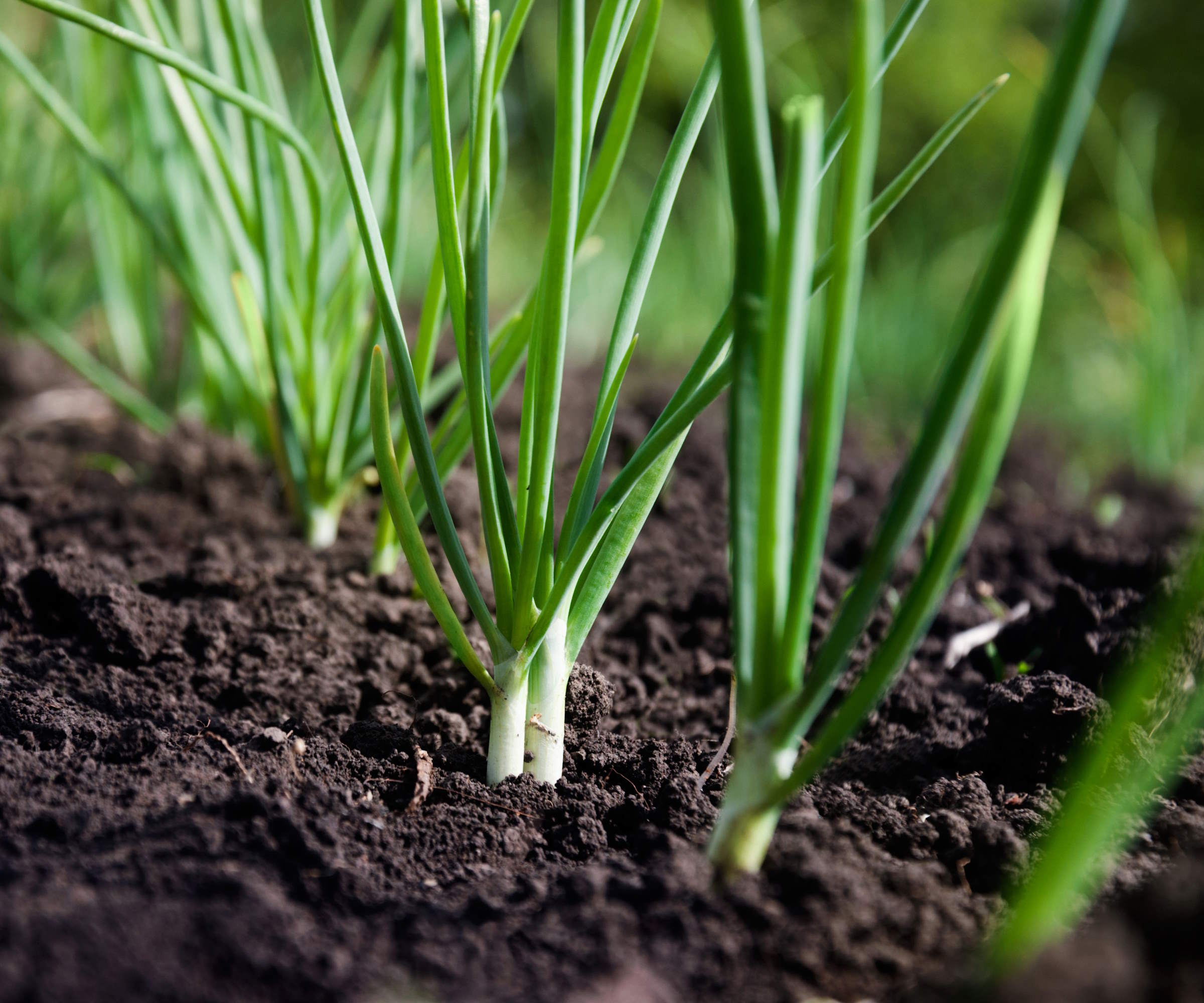
How to grow green onions from seed
While bulb onions can be grown from seeds or sets, green onions are only grown from seed. This is commonly done by sowing them directly into the soil once it has warmed up in spring, while you can start the crop earlier by sowing indoors in a greenhouse or on a windowsill.
When sowing directly into the kitchen garden, green onion seeds can be sown throughout the year and are best done in succession every few weeks to give yourself a long and continuous cropping season.
Seeds sown from early spring through to early summer will grow quickly and provide a harvest from summer onwards. Sowings in mid-summer or early fall can provide early harvests in spring. Hardier varieties are advised for later sowings, such as the 'White Lisbon' type, available at Burpee. The alternative is that green onions can be grown indoors, or protected outside with cloches or fleece, for the colder months.
Sow green onion seeds thinly in drills 12-18 inches apart once the soil has warmed to around 70°F in spring. Water them well and the seeds should germinate quickly. Once they have started showing, thin the seedlings to around two inches apart and no further thinning is required. Sow seeds every two or three weeks throughout spring and early summer to give yourself a long harvest of green onions.
Green onion seeds can be sown indoors around six weeks before the last frost for your US hardiness zone to provide an earlier harvest. Start the seeds by sowing them thinly in trays or modules filled with a good seed compost and covered with a thin layer of compost. Keep them well watered and somewhere warm and bright and the seeds should germinate quickly.
Once the risk of frosts has passed, transplant the seedlings out into the garden. Handle the seedlings carefully and you can either gently separate and plant individual seedlings into holes or plant clumps of seedlings together that can grow and be harvested as bunches of green onions.
You can see the range of green onion seeds available at True Leaf Market.
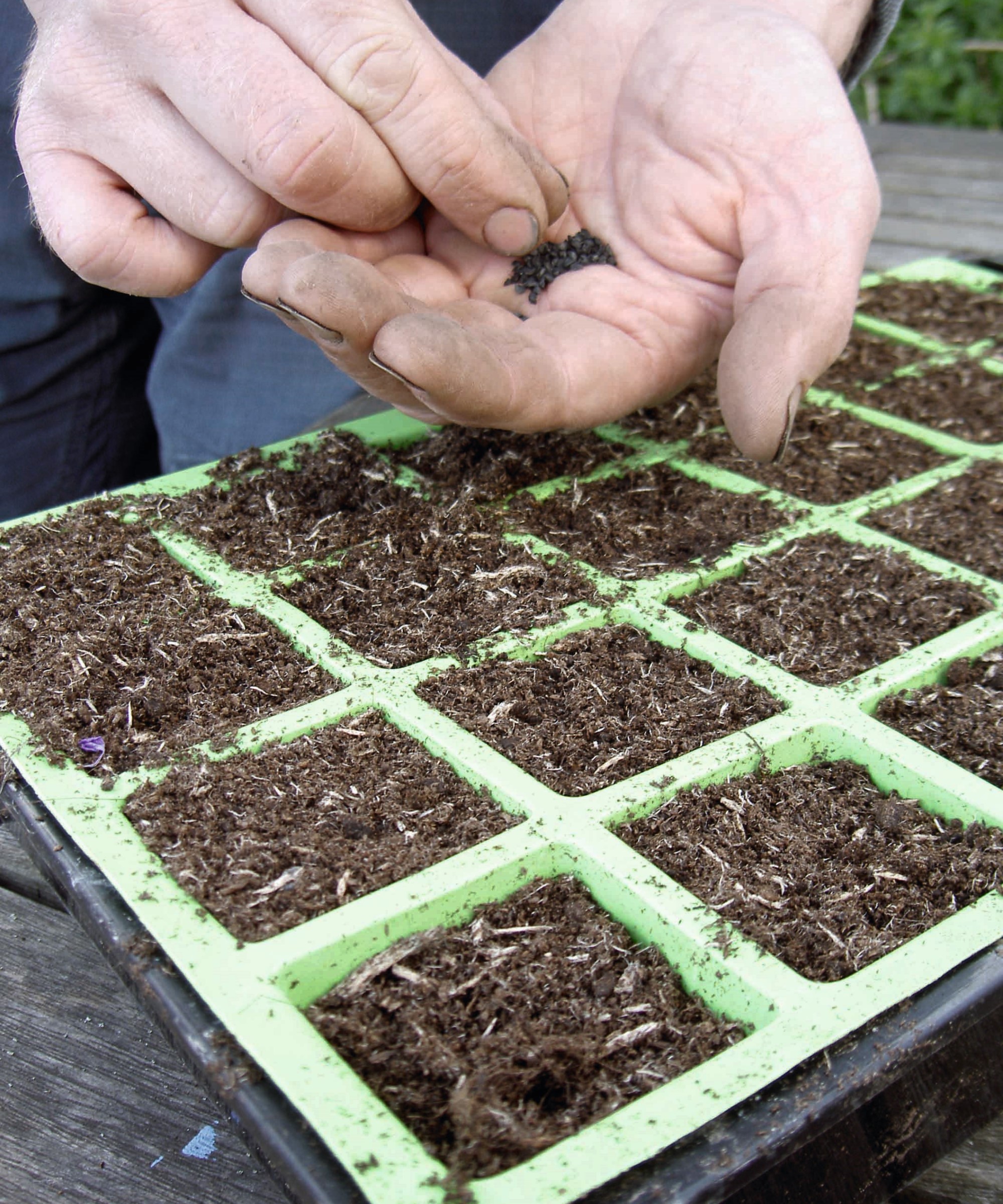
How to grow green onions in a pot
If you are short of space to grow in the ground, you can grow onions in containers as part of any vegetable container garden. As green onions have shallow roots you do not need to use a deep container, just ensure that any pot, trough, or planter has drainage holes in the bottom.
Fill your chosen container with a good quality potting compost and sow the seeds thinly on the surface, covering with a fine layer of compost.
An advantage of growing the crop in a pot is you can sow earlier undercover and move the pot outside once the weather has increased, and bring a pot of green onions indoors to grow over winter.
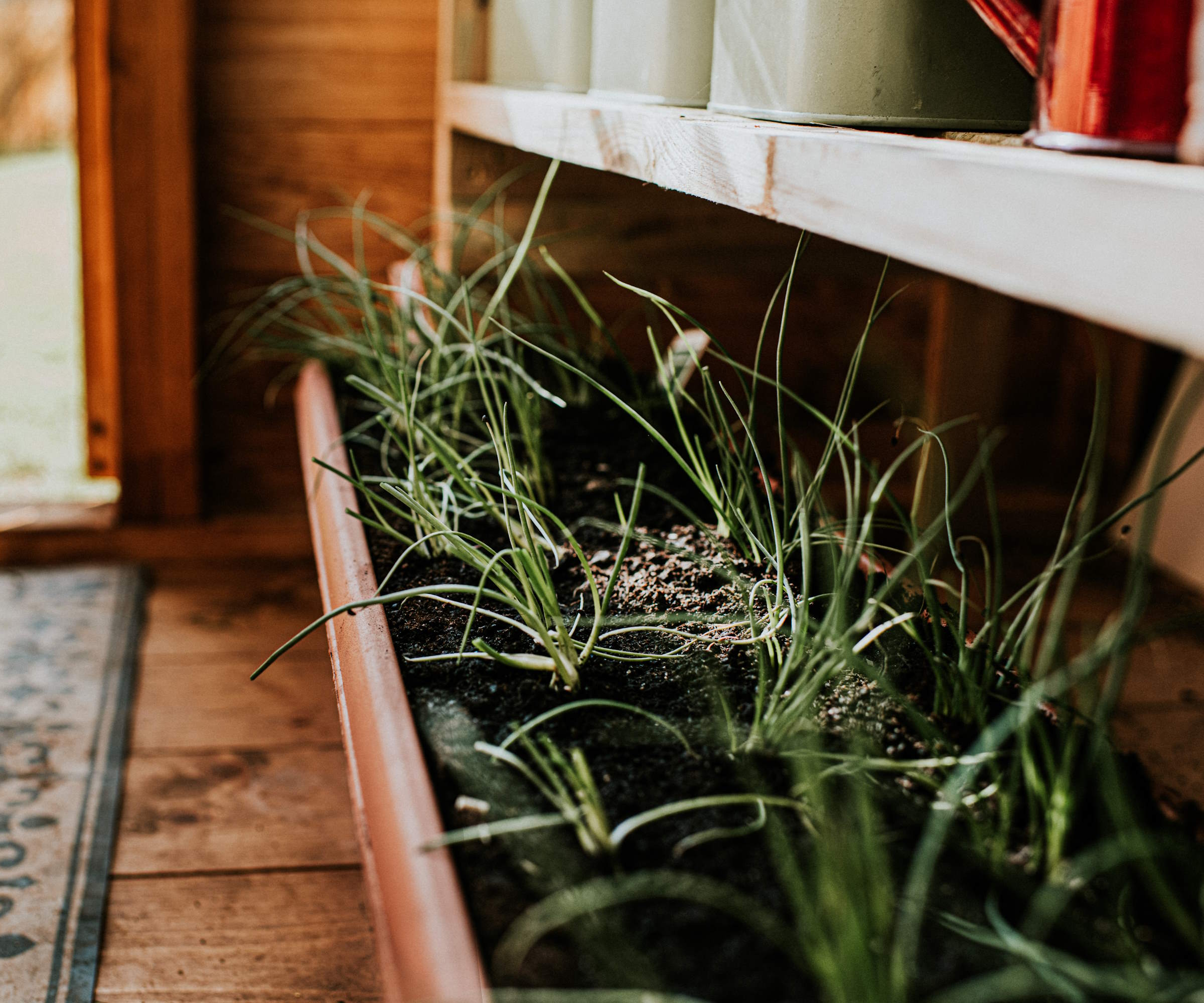
Green onions care tips
Monitor your green onions carefully and water the plants as required and keep the soil moist. This is especially important during hot periods as the plant’s shallow roots can easily dry out in warm weather.
Aim to keep the soil moist but not waterlogged, as this can lead to rotting. There are some ways to keep soil moist in the summer you may consider, including mulching the soil to retain moisture or using drip irrigation for watering plants in hot weather. In terms of how to water, make sure to water the soil, not the foliage - soaking the leaves is a garden watering mistake that can lead to an increased risk of fungal diseases, such as downy mildew.
As well as adding lots of organic matter into the growing site before planting green onions, it can be beneficial to give plants a balanced slow-release fertilizer at the time of planting. For fertilizing onions, an application of a high-nitrogen fertilizer about three weeks after planting can promote the growth of strong and healthy foliage. An example of a high-nitrogen fertilizer to use is the Hi-Yield Ammonium Sulfate, available at Walmart.
Green onions are fast-growing vegetables and can be ready to harvest in just 50-60 days from planting. The plants are ready once they are between 8-12 inches tall. Harvest green onions regularly as-and-when required and those remaining will continue to develop.
Use a small garden fork to gently lever the green onion from the ground and pull up the entire plant. Refrain from pulling the green onion by hand as this can be a vegetable harvesting mistake that risks damaging, or completely snapping, the stem.
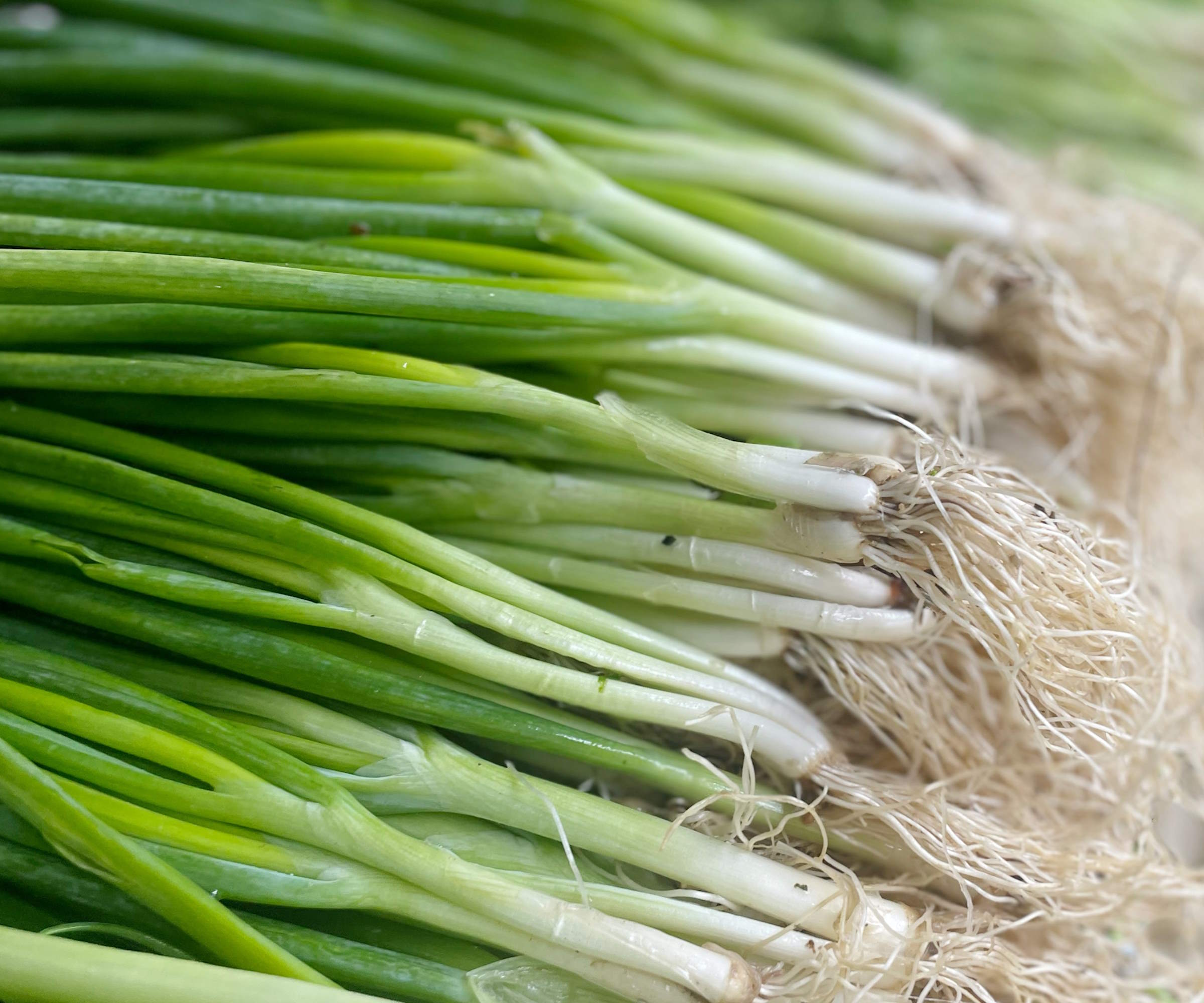
How to grow green onions in water
It is possible to grow onions from scraps and it is really simple to grow green onions from the leftover parts that are usually thrown in the trash.
After chopping off the green and leafy parts, simply take the remaining bulb end and place it roots-down in a container filled with two inches of water. Place that container on a sunny windowsill and regularly change the water.
The first roots should start within a few days and, once the roots have reached around five inches long, you can transplant the onion seedling out into the ground or into a container to continue to grow.
FAQs
How many times will a green onion regrow?
If you re-sprout green onions from scraps, then it can be done more than once. The maximum it can be done is about 3-5 times before the energy in the plant will be fully exhausted and it will just put out weak and straggly growth.
As well as green onions, there are other vegetables that you can regrow from parts that normally just get thrown away. Two perfect examples you may consider trying at home are growing a celery from a stalk and regrowing lettuce from scraps.







